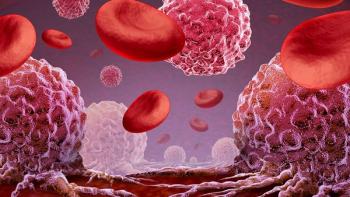
Iopofosine-131 Earns FDA Breakthrough for Waldenstrom Macroglobulinemia
Key Takeaways
- Iopofosine-131 has been granted breakthrough therapy designation by the FDA for relapsed or refractory Waldenstrom macroglobulinemia, indicating its potential to improve treatment outcomes.
- The phase 2 CLOVER WaM study showed an 83.6% overall response rate and a 58.2% major response rate, surpassing the primary endpoint.
Iopofosine-131 received FDA breakthrough status for relapsed or refractory Waldenstrom macroglobulinemia, showing strong response rates in early trials.
The U.S. Food and Drug Administration (FDA) has granted breakthrough therapy designation to iopofosine-131, a potential first-in-class cancer-targeting agent, for the treatment of relapsed or refractory Waldenstrom macroglobulinemia (r/r WM), according to a news release from Cellectar Biosciences.
“The FDA’s breakthrough therapy designation underscores the potential of iopofosine I-131 as it may offer substantial improvement on at least one clinically significant endpoint over available therapies to address the substantial unmet medical need in this life-threatening cancer,” said James Caruso, president and chief executive officer of Cellectar, in the news release. “With robust clinical data, a favorable safety profile, expedited review designations in the United States and Europe and a compelling commercial market potential, we believe iopofosine I-131 represents an attractive candidate for potential collaborations or partners seeking impactful innovation and accelerated development pathways.”
Results from the phase 2 CLOVER WaM study showed an overall response rate of 83.6% and a major response rate (MRR) of 58.2%, exceeding the study’s primary endpoint of a 20% MRR. These data were shared at a podium presentation at the 66th American Society of Hematology Annual Meeting in December 2024 by Dr. Sikander Ailawadhi, professor of medicine at Mayo Clinic.
The FDA previously granted iopofosine-131 both fast track and orphan drug designations. In Europe, the European Medicines Agency (EMA) granted orphan drug designation as well as PRIME designation for r/r WM.
Cellectar has also submitted a comprehensive data package to the EMA, including preclinical, regulatory and manufacturing data, along with safety and efficacy findings from the CLOVER WaM phase 2b study. The EMA will evaluate whether the evidence is sufficient for Cellectar to pursue conditional marketing authorization. A recommendation from the agency regarding whether to submit a marketing authorization application is expected in late July 2025.
Iopofosine I-131 utilizes a phospholipid ether as a radioconjugate monotherapy.
Cellectar’s products currently being evaluated by health agencies includes iopofosine I-131, a phospholipid drug conjugate (PDC) delivering iodine-131; CLR 121225, an actinium-225–based agent in development for solid tumors such as pancreatic cancer; and CLR 121125, an iodine-125–based radiotherapeutic being explored in solid tumors like triple-negative breast, lung and colorectal cancers. The company is also advancing proprietary preclinical PDC chemotherapy candidates and several partnered programs.
Iopofosine I-131 is also being studied in phase 2b trials for relapsed or refractory multiple myeloma and central nervous system lymphoma, as well as in the phase 1b CLOVER-2 trial for pediatric patients with high-grade gliomas. If approved for the pediatric indication, Cellectar may receive a pediatric review voucher from the FDA.
Altogether, the drug has received six orphan drug, four rare pediatric disease and two fast track designations from the FDA across multiple indications.
What Are WM and Breakthrough Therapy Designation?
WM, the most common subtype of lymphoplasmacytic lymphoma, remains incurable with current therapies, according to the International Waldenstrom’s Macroglobulinemia Foundation. Limited approved treatments highlight the need for novel therapies with unique mechanisms of action.
Breakthrough therapy designation is an FDA program designed to speed the development and review of drugs for serious or life-threatening conditions. It is granted when early clinical evidence indicates that the therapy may significantly improve at least one meaningful endpoint over available treatments. This designation provides greater interaction with the FDA and may support a six-month priority review of a future new drug application.
For more news on cancer updates, research and education,





